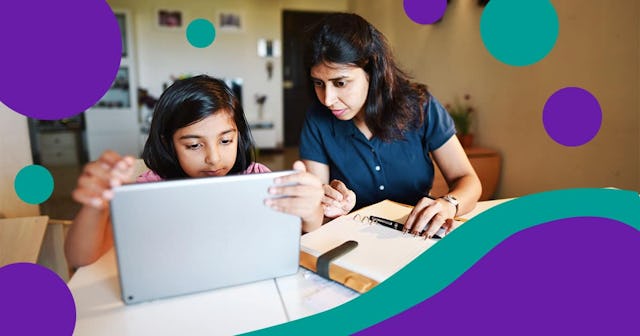Combo-Learning May Be The 'New Normal' For School Next Year

I work at Oregon State University, and our provost just released a plan summary for reopening in the fall — and I’ll be honest, it isn’t exactly what I expected. There was this naive part of me that assumed life would return to normal come fall, and I, along with my coworkers, would wander back onto campus in September, chatting about classes and students, all of us feeling like we dodged a bullet. But what it appears fall may look like (at least, what Oregon State University is currently predicting) is a mix of remote learning and in-person learning, all of it in an effort to educate students while also providing enough building space for proper social distancing.
What is happening at Oregon State University isn’t all that much different than what’s going on nationwide. According to NPR, reopening schools will not be as easy as just opening the doors, as long as COVID-19 is still a looming threat. And when you factor in social distancing, things get good and complicated, even with the simplest of functions.
For example, look at transportation. In November, just before our lives changed, I went with my daughter’s kindergarten class to see a play. I rode the bus with all the kids, and I actually sent a text to my wife that read, “This bus smells like a virus.” On a full school bus, there is not enough space to keep two feet away from someone, let alone six feet. So does this mean school districts are going to need to run more buses so that children can spread out? Or are parents going to be expected to drop off their children regardless of work schedules? Without a doubt, school districts are asking those questions now.
What most schools are looking at is a hybrid of virtual learning and classroom instruction — and exactly what that will look like depends on the school, and the children’s needs. New York Gov. Andrew Cuomo this week announced that the state will be working with the Bill & Melinda Gates Foundation to “reimagine schools.” The foundation has backed a range of technological innovations in education. All this seems to indicate that next school year, our children won’t be learning from home as much as they are now, but still much more than they did last fall.
RichLegg/Getty
I want my children back in school. Like most parents, I am tired of trying to teach them while also trying to manage my work obligations. I’m happy to do it as long as it keeps kids safe and prevents the spread of COVID-19, but what most schools are suggesting feels to me like an assortment of gears that is going to make scheduling our lives even more complicated later this year.
To state the obvious, many of us rely on school and daycare while we’re at work. But let’s say, for example, that classes are staggered: Some kids attend Monday and Wednesday while other kids attend Tuesday and Thursday, and students with high need also attend Fridays. Social distancing can be managed this way with the available classroom space in most schools. On the days where students are not in class, they will learn remotely. While that will maximize safety, it creates a beautiful mess for those of us expected to go into work Monday through Friday.
Going back to the NPR story on this subject, some schools are considering student needs rather than a shifting schedule when prioritizing classroom space. Students in special education classes, for example, will be given priority when it comes to face-to-face instruction. But of course, schools are not only looking at students through an academic lens. They are also looking at students who have suffered trauma after losing a family member, along with those who are at additional risk of domestic violence in the home. Those students will also be given priority so they can access school-funded counseling services.
The number one priority in all of this is keeping our children safe, and doing that means an assortment of gears that are still being aligned. Chances are, they will not be perfect — far from it, actually. A mix of in-class and remote learning is in our foreseeable future, as schools try to navigate the changing landscape of educating children in the shadow of a pandemic. Parents will be frustrated trying to make it all work, no doubt about it. And chances are, whatever is agreed upon in the fall, will probably change by winter.
But if it’s any consolation, consider this: It seems like I blinked, and my children were learning from home, while my wife and I were working from home, and the world around us went to hell. I am confident you feel the same. As uncomfortable as it all has been, though, I like to think that my family has adapted to this new situation. It sucks, and I don’t like it, but we have adapted. And as things change in the fall, we will have to adapt to another new normal: combo-learning.
Somehow we will make it work, I assure you.
But we’re still allowed to complain about it a little.
This article was originally published on